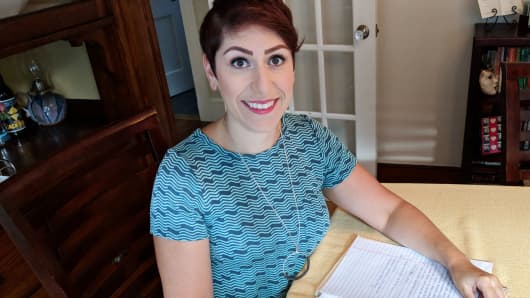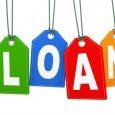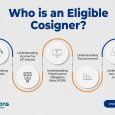
Nina Pomponio is one of the first people to have her student debt canceled thanks to the public service loan forgiveness program — and she has advice for other borrowers.
Recent Education Department data showed that less than 1 percent of people who applied to have their student debt canceled under the program, which allows certain not-for-profit and government employees to have their federal student loans erased after 10 years of on-time payments, were approved.
One of those lucky people is Pomponio, a lawyer at the Massachusetts Probation Service. In June of this year, she received the notice from FedLoan, the servicer for public service loan forgiveness, that her remaining debt of around $50,000 would be scrubbed and that her new balance was $0.
These are the public service loan forgiveness requirements. Often, if you don’t meet one of them, you can make changes so that you do.
- Your loans must be federal direct loans.
- Your employer must be a government organization at any level, a 501(c)(3) not-for-profit organization or some other type of not-for-profit organization that provides public service.
- By the end, you need to have made 120 qualifying, on-time payments in an income-driven repayment plan or the standard repayment plan.
Pomponio realized just how few people had also crossed the finish line during a recent phone conversation with a representative at FedLoan.
“The guy was so excited,” she said. “He was like, ‘Oh, my god. You’re the first one we’ve seen.’ I was like, ‘Just me?'”
One-quarter of American workers were supposed to be eligible for the program, the Consumer Financial Protection Bureau estimated a few years back. But the bureau has since reported that student loan servicers are delaying or denying borrowers access to the consumer protection, making people like Pomponio a rarity.
More from Personal Finance
These are the ways student loans stop people from buying a house
Student loan nightmare: Some borrowers have to start over
People with massive student debt hope Trump will let them declare bankruptcy
Last year was the first year of eligibility, since the program was signed into law in 2007 and requires at least 10 years of payments. Nearly 30,000 borrowers have applied for the forgiveness so far, according to the Education Department’s data. Just 96 people were approved.
Pomponio’s advice
“I want other people to know it’s possible,” she said.
“My first tip is to be persistent,” she said. “It, on average, had taken me two to three calls or emails to resolve each issue I had. Don’t assume the weak answer they give you is the real answer.”
Document everything, Pomponio said. She said she took “copious notes including names and reference numbers.” For more serious issues, she relied on email so that she’d have a paper trail. At one point, FedLoan’s count of her qualifying payments was lower than hers. She went back through her notes, and asked the servicer to explain the discrepancy. “It was detective work,” she said.
At least once a year, borrowers should submit their employer certification form, she said. That document confirms and updates the number of qualifying payments you’ve made. (You need 120 to qualify.)




